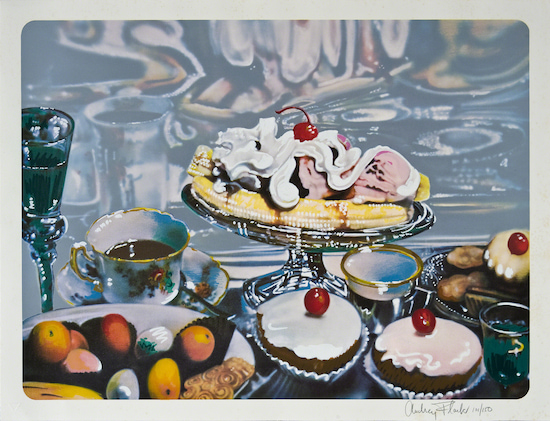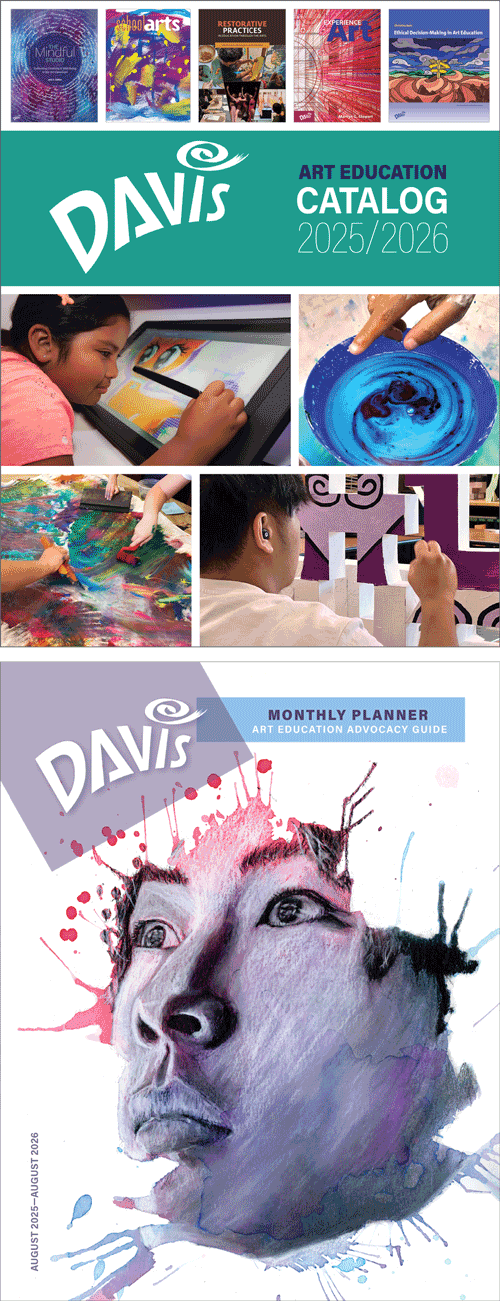Artist Birthday: Audrey Flack
Having matured as an artist shortly after the “revolution” of the Abstract Expressionism movement, Audrey Flack became one of the earliest and archetypal Photorealist painters, working from photographs for her hyper-realistic paintings and prints.
Artist birthday for 30 May: Audrey Flack (1931–2024, United States)
Audrey Flack was an artist who in 1952 definitively rejected Abstract Expressionism as "too male dominated" and obsessed with personal mark.
 |
| Audrey Flack, Banana Split Sundae, from the Presidential Portfolio, 1980. Embossed chromolithograph on paper, 45.9 x 61.6 cm. Hirshhorn Museum and Sculpture Garden, Smithsonian Institution, Washington, DC. © 2025 Artist or Estate of Artist, permission for reproduction given by the Artist to Davis Art Images. (SI-576) |
Even in color lithographs, which Flack began producing in the 1970s, Flack stuck to her technique of photograph-based still life works. Her use of reflections show her debt to Baroque still life, and to such 1800s artists as Manet (1832–1883) and Cassatt (1844–1926) who, influenced by photography, created new perceptions of the picture plane and pictorial space in painting with trompe l'oeil reflections in their works. She used the lithographic medium expertly to continue exploring the idea of not just copying photographs, but also copying depth of field issues (seen here in the reflections), focus and out-of-focus qualities of photographs.
Throughout the history of art in the United States, there has been a visual fascination with material reality. The old love of realism in art were too deeply ingrained in the American public to completely die out even with the advent of Abstract Expressionism and Minimalism in the mid-1900s.
From mid-century to the present there have always been artists working with the recognizable figure. The most famous of movements to return to figuration was Pop Art in the late 1950s, and New (or, Photo) Realism of the 1960s. The movements themselves were a reaction to what was perceived as the domination of Abstract Expressionism in the art world in America.
Since then many artists continue to produce figurative work in a variety of styles. The Photorealism was celebrated with a major 1972 exhibition entitled "Sharp-Focus Realism," a show that included traditional, non-abstract and illusionistic work, many of which, like Estes's work, resembled photographs.
Born in New York, Audrey Flack attended the High School for Art and Music and graduated from Cooper Union, where she had been trained in the painting style of Abstract Expressionism. She then studied under geometric abstractionist and Bauhaus alum Josef Albers (1888–1976) at Yale. Despite her experience with Abstract Expressionism and Albers’s geometric minimalism, Flack turned to realism as early as 1952 and is often credited with being the pioneer of Photorealism.
In an art scene dominated by Abstract Expressionism, Flack’s realistic figurative work of the 1950s earned her little critical acclaim. Flack rejected Abstract Expressionism because she felt that the movement favored male artists; she also rejected its narcissistic emphasis on personal gesture.
In 1964, upset by President Kennedy’s assassination, Flack created what is considered to be the first truly Photorealist painting, Kennedy Motorcade. The work was based on a photograph that Flack had projected onto canvas. She used this means throughout her career and it accounts for the detailed surfaces of her giant canvases. Additionally, airbrush gives them a highly polished surface that makes the jewel-like colors seem almost gaudy.

Comments